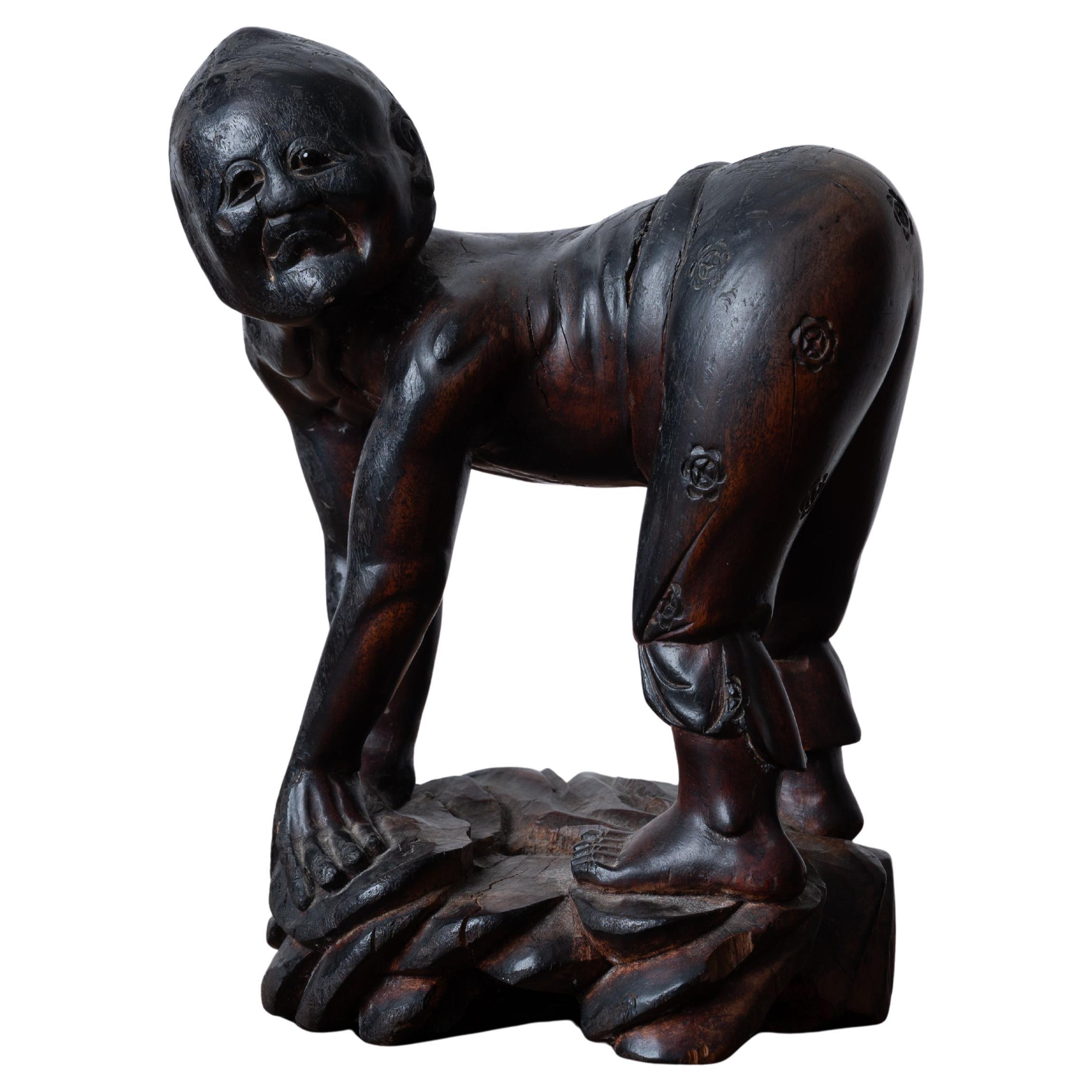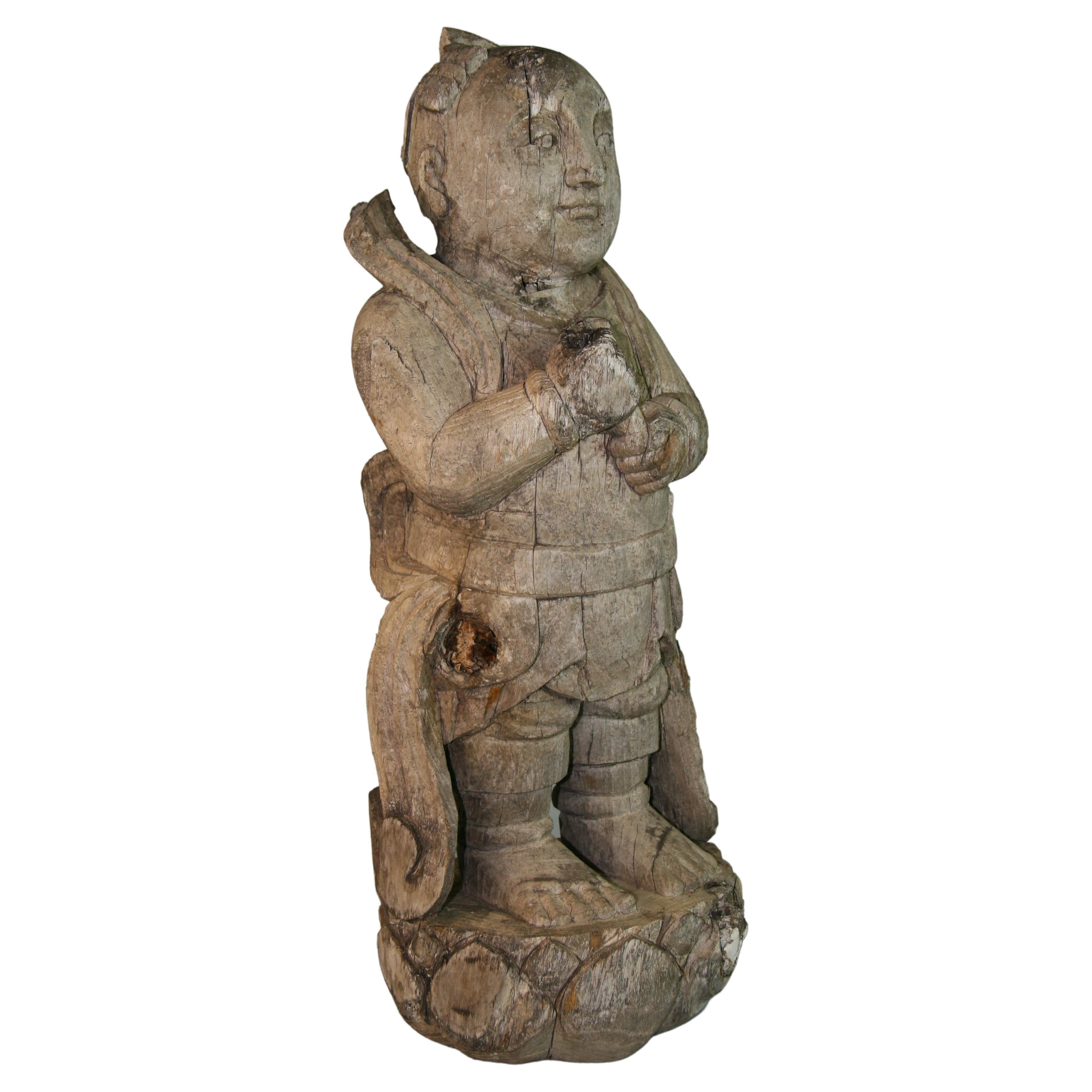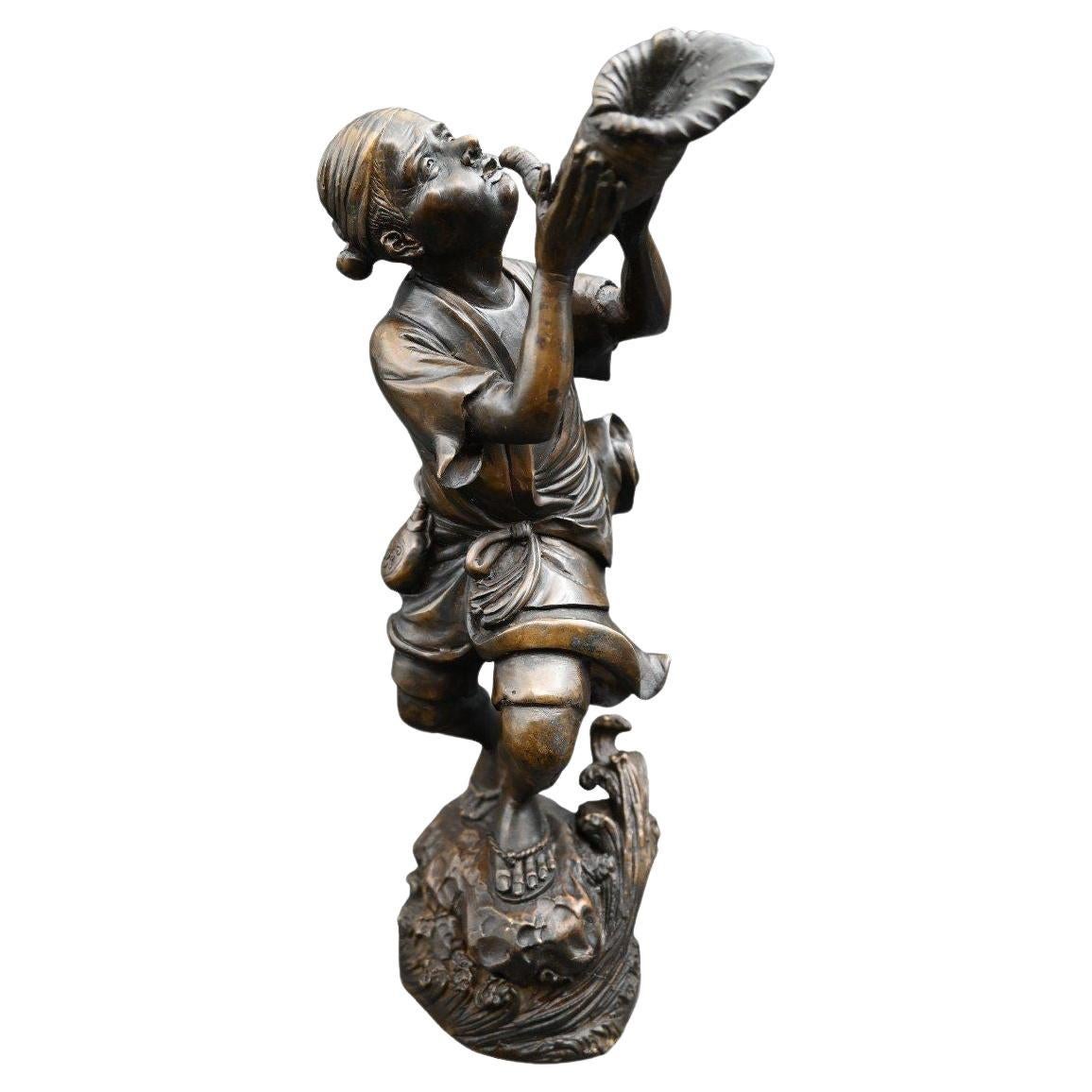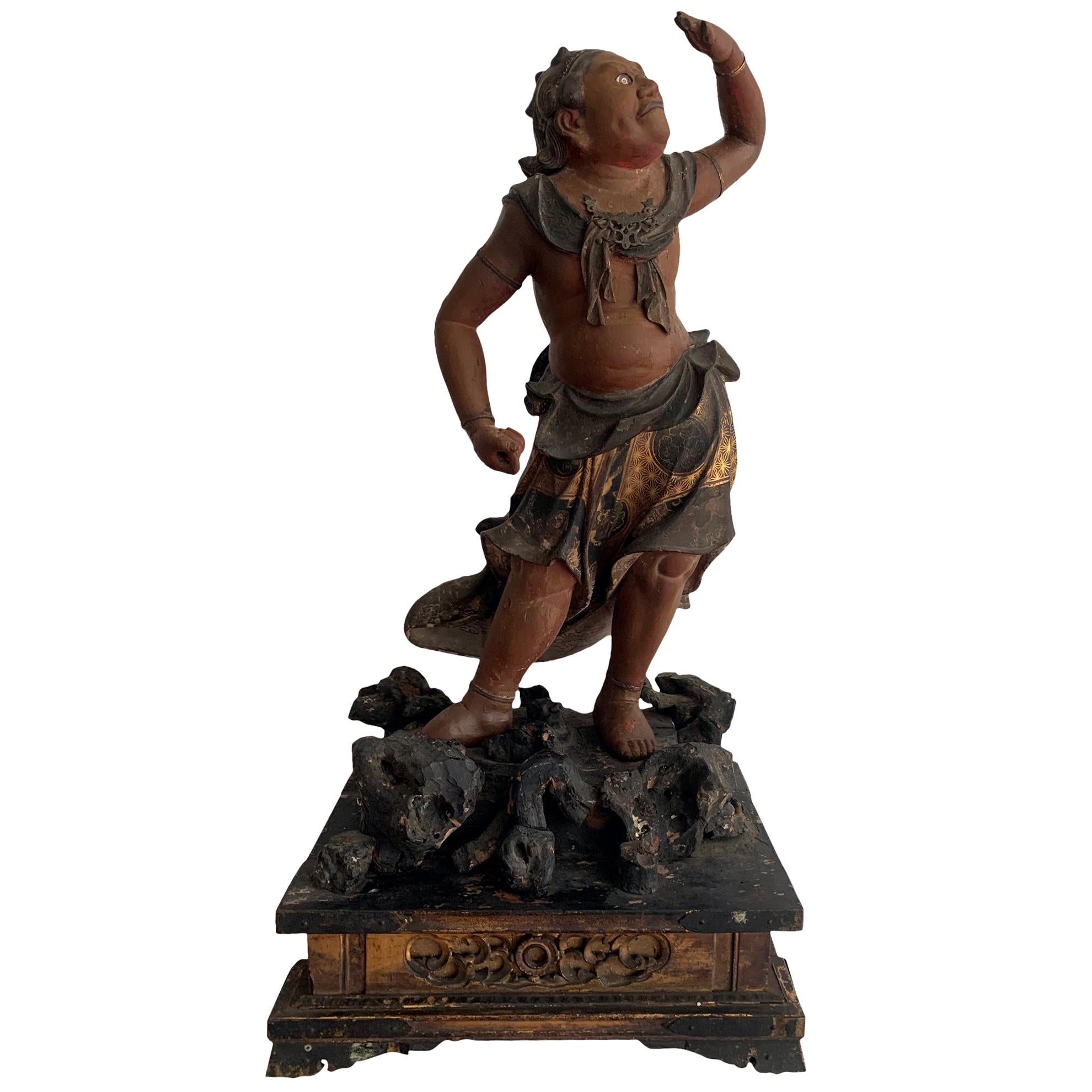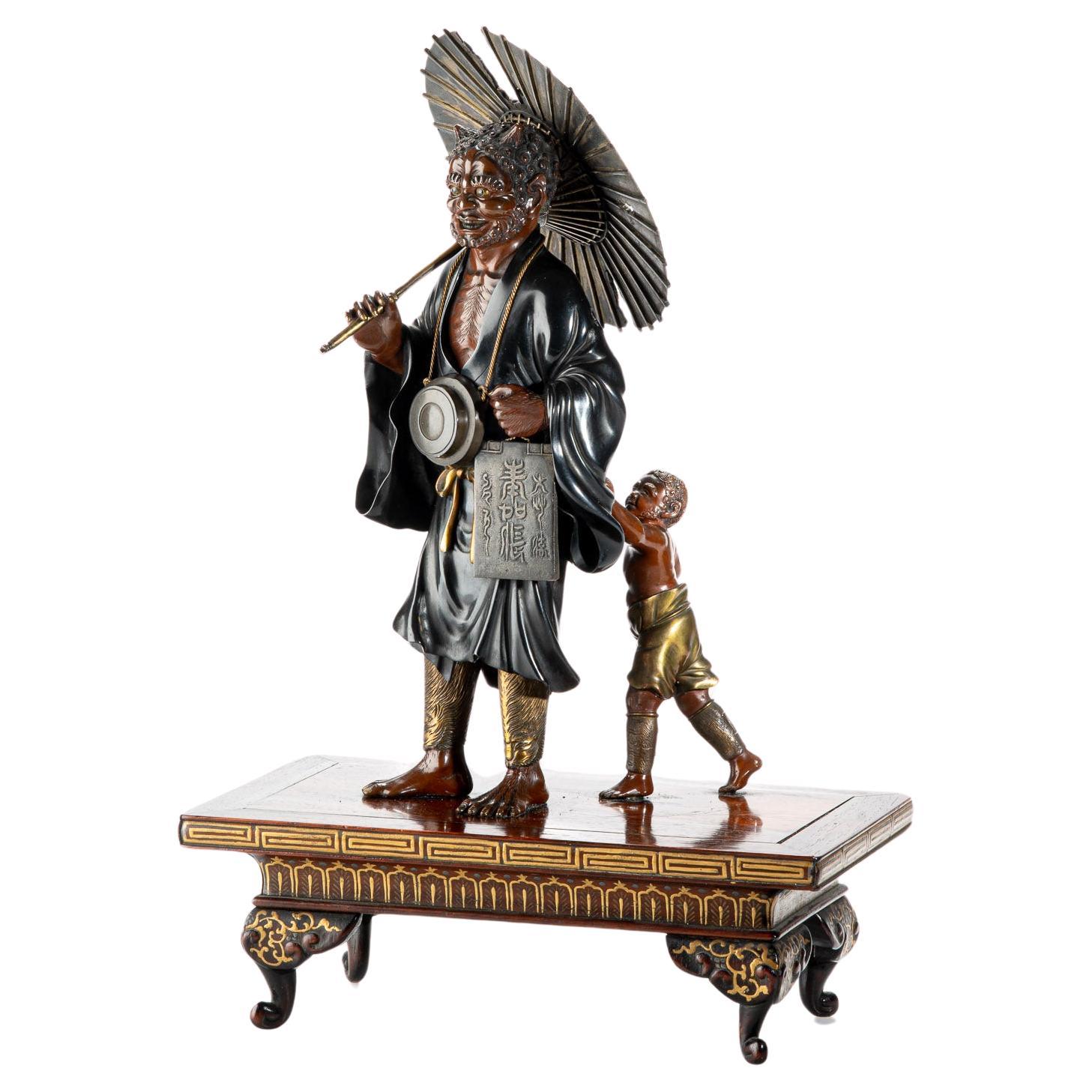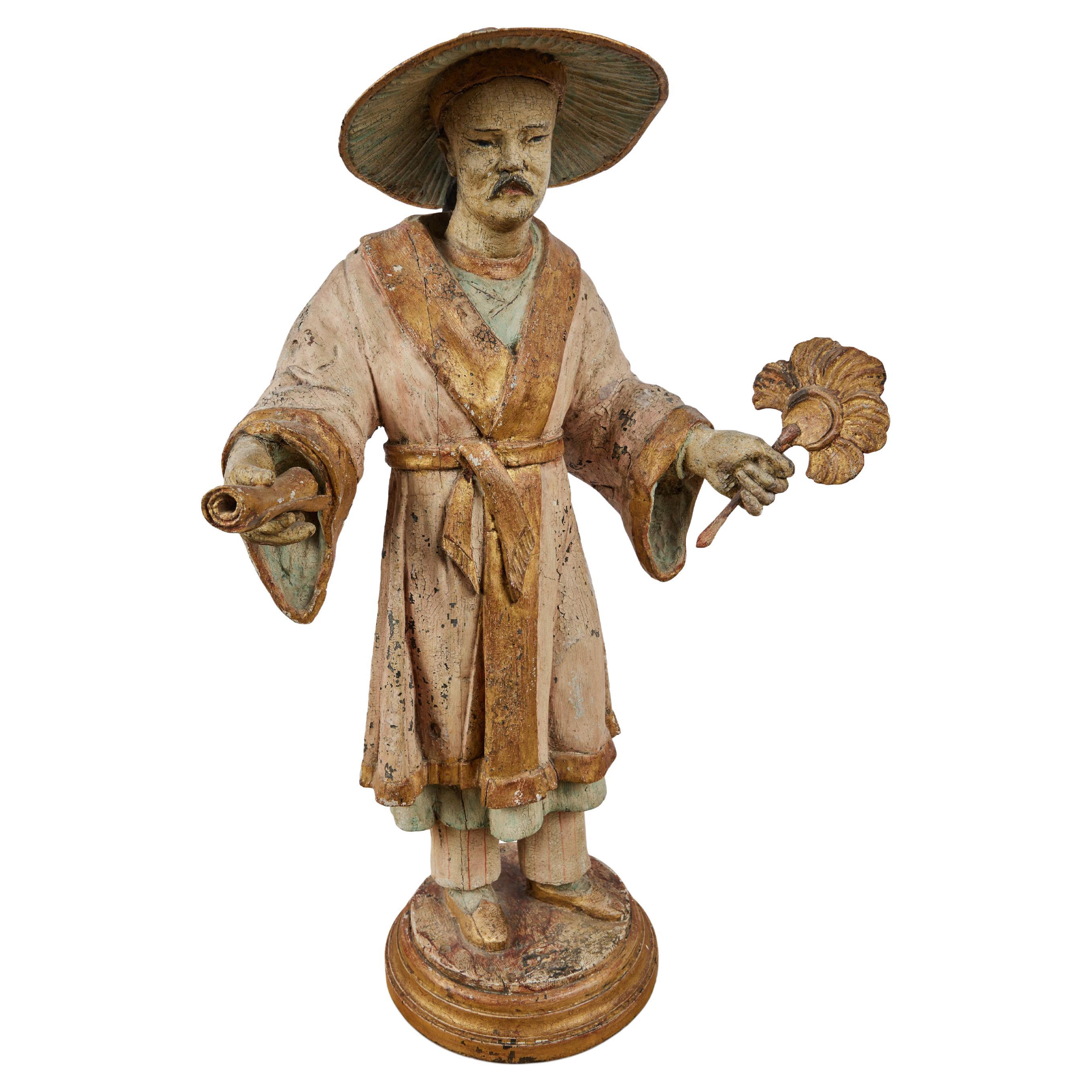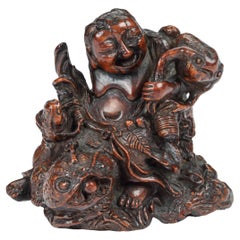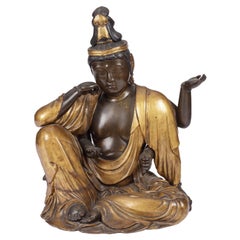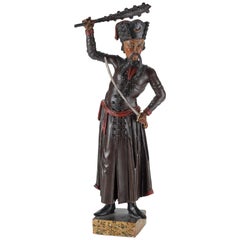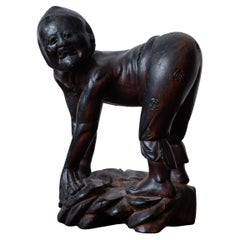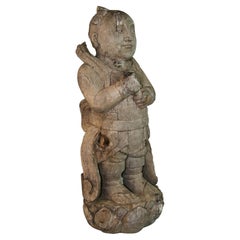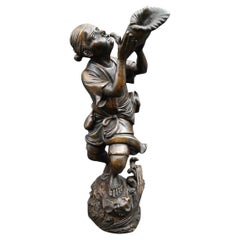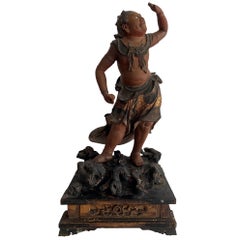Items Similar to Japanese Sculpture Okimono of a Dutchman, Dutch Colonial, 18th Century
Want more images or videos?
Request additional images or videos from the seller
1 of 10
Japanese Sculpture Okimono of a Dutchman, Dutch Colonial, 18th Century
$29,979.47
£22,301.70
€25,000
CA$41,052.15
A$45,644.41
CHF 23,832.99
MX$555,603.57
NOK 304,098.58
SEK 284,925.84
DKK 190,311.19
Shipping
Retrieving quote...The 1stDibs Promise:
Authenticity Guarantee,
Money-Back Guarantee,
24-Hour Cancellation
About the Item
An extremely rare wood Japanese Okimono of a Dutchman playing with a bat
Edo period, 18th-19th century or earlier
The Dutchman is standing and holding a bat in his right hand while caressing it with the other hand, with a benevolent expression on his face and typically depicted, as usual with Dutchmen, with long curly hair, he wears a short jacket over breeches and is standing on a modern rectangular base with a paper label for the Greenfield Collection, nr. 40.
Measures: H. 26 cm
Note:
The Charles A. Greenfield Collection of Japanese art is particularly renowned for its lacquer pieces which have been exhibited in the Metropolitan Museum of New York in 1980. Highlights from the collection are discussed by Eskanazi The Charles A. Greenfield collection of Japanese lacquer. Many pieces from the collection were sold in the three-part sale at Sotheby’s New York between
1998 and 1999.
Literature:
Two similar wooden okimono are illustrated in A Collection of Nagasaki Colour Prints and Paintings, N.H.N. Mody, Charles E. Tuttle Company, Publishers 1969, plate 238.
- Dimensions:Height: 10.24 in (26 cm)Width: 3.94 in (10 cm)Depth: 3.94 in (10 cm)
- Style:Edo (Of the Period)
- Materials and Techniques:
- Place of Origin:
- Period:
- Date of Manufacture:1700-1820
- Condition:Wear consistent with age and use.
- Seller Location:Amsterdam, NL
- Reference Number:1stDibs: LU5458220979482
About the Seller
5.0
Recognized Seller
These prestigious sellers are industry leaders and represent the highest echelon for item quality and design.
Established in 1985
1stDibs seller since 2020
23 sales on 1stDibs
Typical response time: 2 hours
- ShippingRetrieving quote...Shipping from: Amsterdam, Netherlands
- Return Policy
Authenticity Guarantee
In the unlikely event there’s an issue with an item’s authenticity, contact us within 1 year for a full refund. DetailsMoney-Back Guarantee
If your item is not as described, is damaged in transit, or does not arrive, contact us within 7 days for a full refund. Details24-Hour Cancellation
You have a 24-hour grace period in which to reconsider your purchase, with no questions asked.Vetted Professional Sellers
Our world-class sellers must adhere to strict standards for service and quality, maintaining the integrity of our listings.Price-Match Guarantee
If you find that a seller listed the same item for a lower price elsewhere, we’ll match it.Trusted Global Delivery
Our best-in-class carrier network provides specialized shipping options worldwide, including custom delivery.More From This Seller
View AllA Japanese rootwood sculpture of Gama Sennin
Located in Amsterdam, NL
Edo period, 18th century
H. 11 x W. 15 cm
Sennin’s are ascetics living as hermits in the mountains, ascribed with magic powers. This Sennin is sitting between rocks on a huge grim-...
Category
Antique 18th Century Japanese Sculptures and Carvings
Materials
Wood
A superb Japanese giltwood sculpture of Kannon Bosatzu
Located in Amsterdam, NL
A Japanese giltwood sculpture of Kannon Bosatzu
Japan, Edo period, Early 19th century
H. 50 X W. 58.3 cm
Provenance:
- The Somerwil Collection of ...
Category
Antique Early 19th Century Japanese Edo Sculptures and Carvings
Materials
Giltwood
Japanese Kamakura/Muromachi Period Cedarwood Buddhist Priest, 12th-15th Century
Located in Amsterdam, NL
Seated Buddhist priest
Japan, Kamakura period (1185-1333) or Muromachi period (1333-1573).
Different carved hollow blocks of cedar wood joined togeth...
Category
Antique 15th Century and Earlier Japanese Sculptures and Carvings
Materials
Cedar
Orientalist Turkomania Wood Sculpture of an Ottoman, Early 19th Century
Located in Amsterdam, NL
A carved and painted wood 'TURKOMANIA' sculpture of an ottoman soldier
French or Dutch Turkomania, early 19th century
Depicted in standing position, with a sword in one hand and a club in the raised other, with a fur hat, long moustache and long coat, on a square base.
Measures: H. 58 cm
Note:
During the Dutch War of Independence from 1568 till 1648, the Dutch and Turks were allies against Roman Catholic Spain and the slogan of the Dutch was “liever Turks dan Paaps” (rather Muslim than Roman Catholic).
In 1612 the first Dutch ambassador arrived in Istanbul. Nevertheless, in Holland, there was also the image of the cruel and heretic Turk stemming from the frequent violent clashes between Dutch ships and the pirates from Algiers, usually called the “Turkish pirates”. When the Ottoman armies advanced against Vienna, in the eyes of many Europeans the Islam bent on destroying Christianity. Later in the early 19th century, although the Turkish threat to Europe was long gone, the image of the Turks deteriorated again because of the Greek uprising.
The Sultan Mahmud II understood that Turkey had to modernize along West European lines and among other things in 1808 he replaced the “picturesque” oriental clothing...
Category
Antique Early 19th Century Dutch Figurative Sculptures
Materials
Wood
Very Fine and Detailed Balinese Sugarwood Sculpture of a Ramayana Scene
Located in Amsterdam, NL
A fine Balinese Suarwood (Albizia saman) sculpture depicting a scene from the Ramayana
Gianyar, 1970-1980
Measures: H. 48.5 cm
The sculpture depicts a scene from the Ramayana....
Category
20th Century Balinese Sculptures and Carvings
Materials
Wood
Splendid Indo-Portuguese Colonial Sculpture of Nagini from Goa, 17th Century
Located in Amsterdam, NL
A fine Indo-Portuguese inlaid teak wood figure of Nagini
India, Goa, 17th century
Measure: H. 55 cm
(with stand, and with ring for wall hanging)
The sculpture can be perceived as such but probably is one of four legs of an Indo-Portuguese contador...
Category
Antique 17th Century Indian Jewelry Boxes
Materials
Teak, Ebony
You May Also Like
A Japanese Carved Root Yōkai Figure, Meiji Period
Located in Savannah, GA
A japanese carved root yōkai figure, Meiji Period.
6 inches wide by 5 inches deep by 8 inches tall
Category
20th Century Japanese Figurative Sculptures
Materials
Wood
Japanese Carved Wood Sculpture 19th Century
Located in Douglas Manor, NY
1310 Japanese carved wood sculpture.Early 19th century
Category
Antique 1820s Sculptures and Carvings
Materials
Harewood
Japanese bronze Okimono , Edo period
Located in Bilzen, BE
Japanese bronze okimono from the Edo period in its old patina and good condition,
Beautiful quality and expression
Height 30 cm, not signed
Category
Antique 18th Century Japanese Edo Sculptures and Carvings
Materials
Bronze
Japanese Lacquered and Gilt Wood Buddhism Statue from Edo Period
Located in Atlanta, GA
An exceptional and wood statue of Buddhism Guardian Seitaka Doji from Japan circa Edo period (1603-1868), likely the earlier part of 17th century. One of two chief attendants of Fudou Myouou (the other being Kongara Doji), the name of Seitaka Doji is a transliteration of Sanskrit "Cetaka", meaning servant, slave, and he is said to personify expedient action. He is most commonly found on the right side of Fudou, together with Kongara Doji on the left, forming the Immovable triad, Fudou Sanzon, the terror of evil doers. Seitaka largely adheres to the iconography of a wrathful youth with fleshy body and face, skin in the color of a red lotus, has his hair tied in five knots, and holds a vajra in his left hand and a vajra-club in his right hand, but the actual artistic representations of him in Japan do...
Category
Antique 17th Century Japanese Japonisme Sculptures and Carvings
Materials
Metal
A Japanese bronze okimono Oni Nembutsu
Located in Milano, IT
A Japanese great and remarkable bronze okimono, on a wooden base, depicting an Oni, dressed as a priest, accompanied by a young oni.
The main Oni is portrayed standing and smiling, ...
Category
Antique Mid-19th Century Japanese Japonisme Metalwork
Materials
Bronze
$7,386 Sale Price
20% Off
c. 1800, Carved Chinese Figure
Located in Los Angeles, CA
An elegant, turn-of-the-19th century, hand-carved, fully finished polychrome and parcel gilt statue of a Chinese wise man with a cascading braid beneath a...
Category
Antique Early 1800s Italian Figurative Sculptures
Materials
Wood
More Ways To Browse
18th Century Wood Carving
18th Century Colonial Furniture
Hand Carved Sculptures Japan
Japanese Wood Plate
Sothebys New York
Japanese Labels
Colonial Furniture Company
Boxwood Art
18th Century Japanese Plate
18th Century Asian Wood Carvings
Colonial Wood Carvings
19th Century Japanese Wood Carving
Edo Period Carved Wood
Japanese Okimono
18th Century Colonial Paintings
Antique Bat Print
Nagasaki Lacquer
Japanese Wood Okimono
